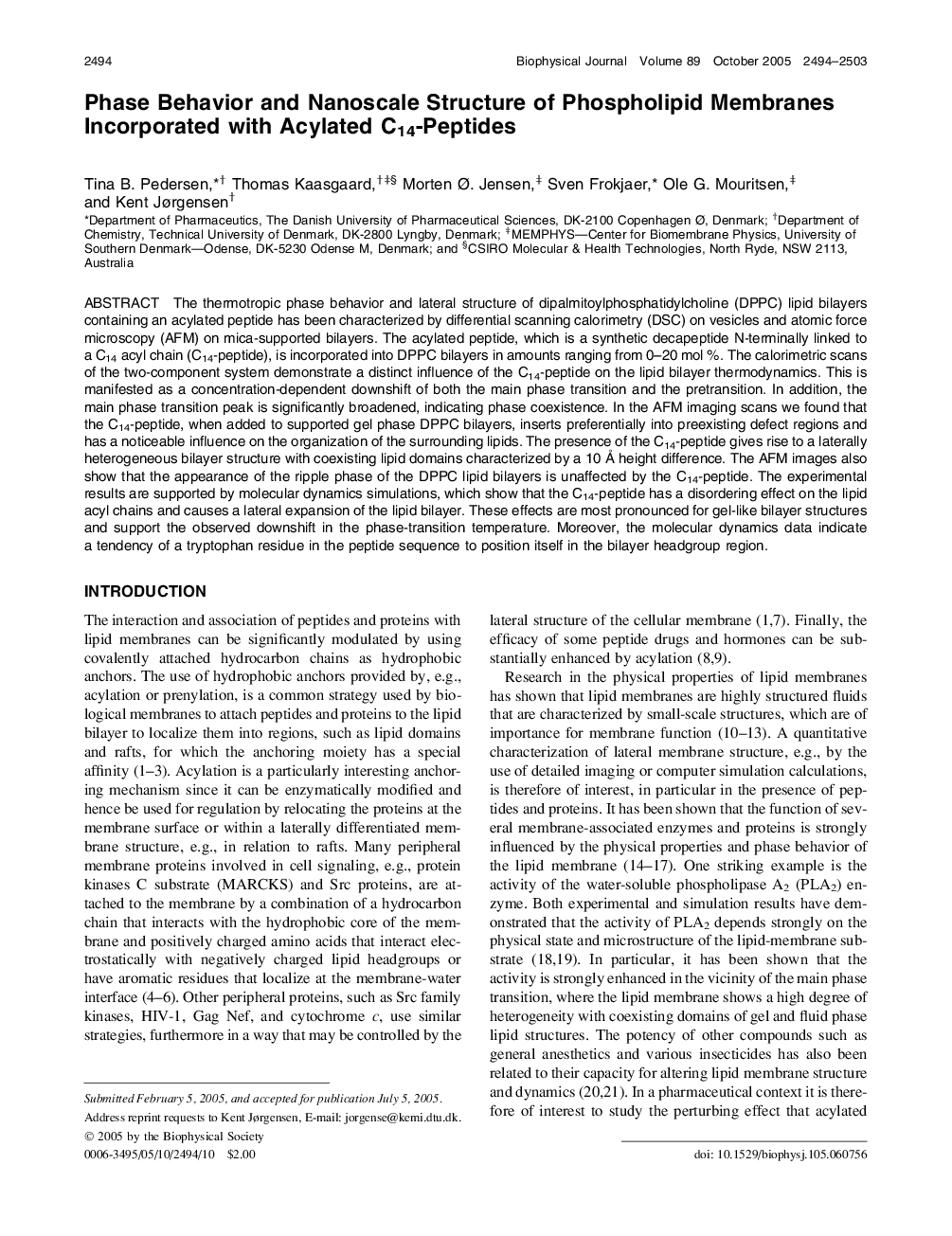| کد مقاله | کد نشریه | سال انتشار | مقاله انگلیسی | نسخه تمام متن |
|---|---|---|---|---|
| 1959010 | 1057924 | 2005 | 10 صفحه PDF | دانلود رایگان |

The thermotropic phase behavior and lateral structure of dipalmitoylphosphatidylcholine (DPPC) lipid bilayers containing an acylated peptide has been characterized by differential scanning calorimetry (DSC) on vesicles and atomic force microscopy (AFM) on mica-supported bilayers. The acylated peptide, which is a synthetic decapeptide N-terminally linked to a C14 acyl chain (C14-peptide), is incorporated into DPPC bilayers in amounts ranging from 0–20 mol %. The calorimetric scans of the two-component system demonstrate a distinct influence of the C14-peptide on the lipid bilayer thermodynamics. This is manifested as a concentration-dependent downshift of both the main phase transition and the pretransition. In addition, the main phase transition peak is significantly broadened, indicating phase coexistence. In the AFM imaging scans we found that the C14-peptide, when added to supported gel phase DPPC bilayers, inserts preferentially into preexisting defect regions and has a noticeable influence on the organization of the surrounding lipids. The presence of the C14-peptide gives rise to a laterally heterogeneous bilayer structure with coexisting lipid domains characterized by a 10 Å height difference. The AFM images also show that the appearance of the ripple phase of the DPPC lipid bilayers is unaffected by the C14-peptide. The experimental results are supported by molecular dynamics simulations, which show that the C14-peptide has a disordering effect on the lipid acyl chains and causes a lateral expansion of the lipid bilayer. These effects are most pronounced for gel-like bilayer structures and support the observed downshift in the phase-transition temperature. Moreover, the molecular dynamics data indicate a tendency of a tryptophan residue in the peptide sequence to position itself in the bilayer headgroup region.
Journal: - Volume 89, Issue 4, October 2005, Pages 2494–2503